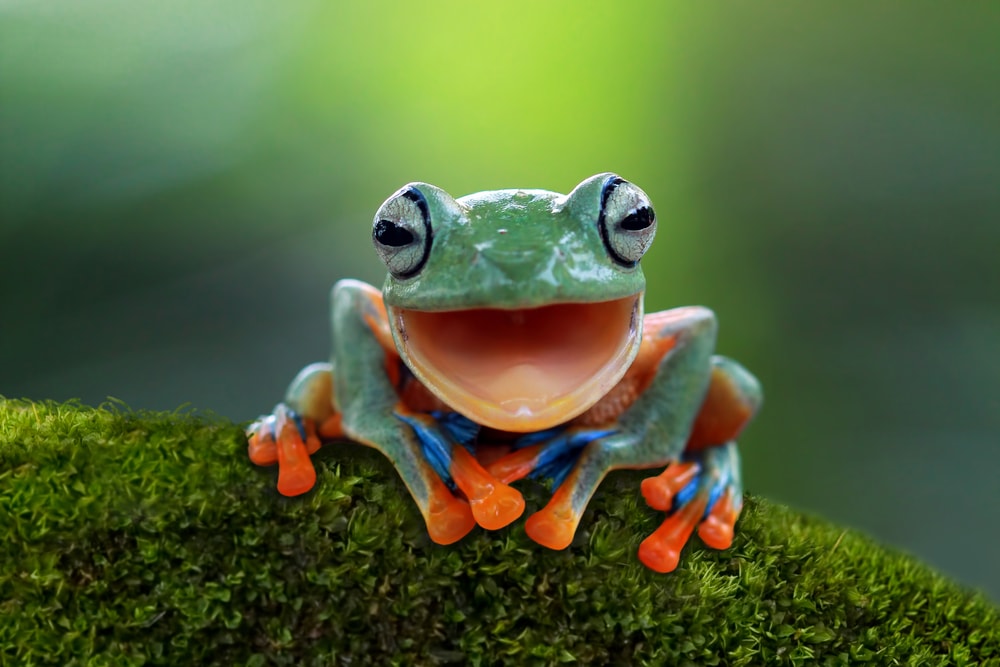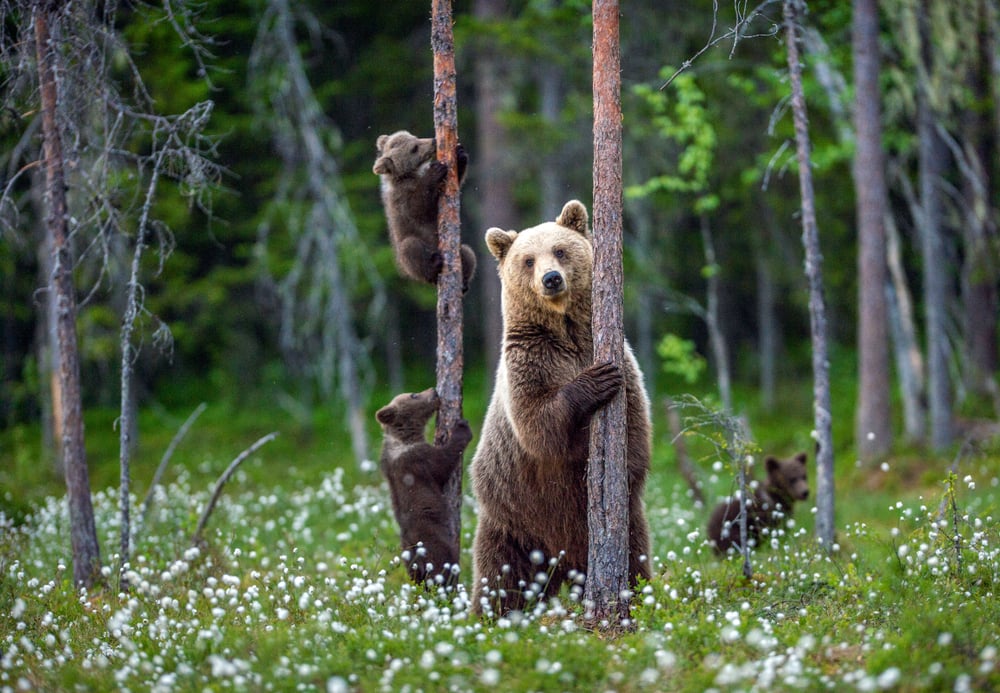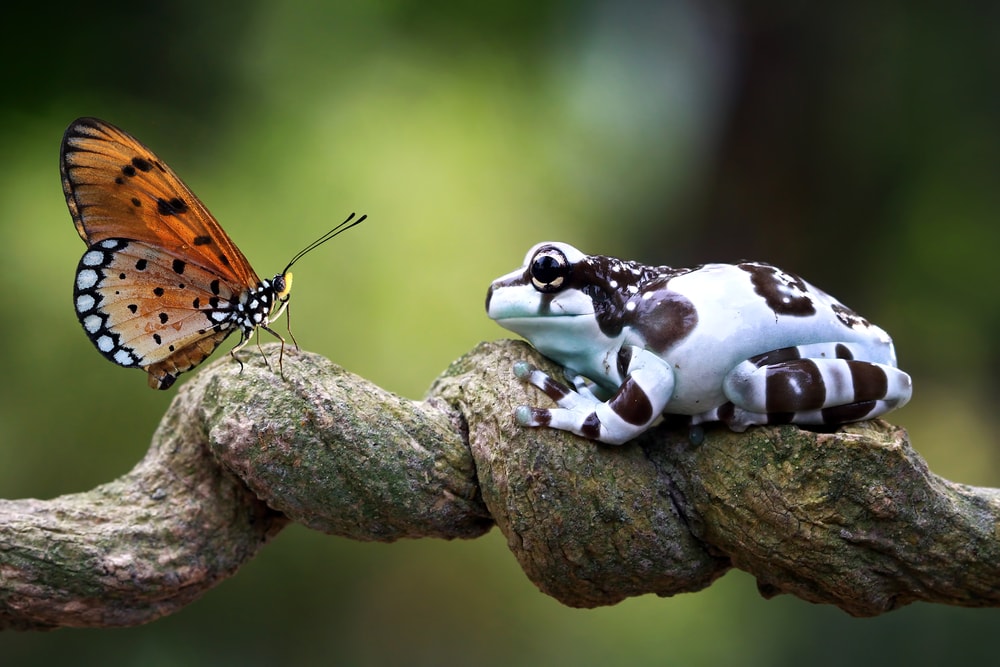Outforia Quicktake: Key Takeaways
- Deciduous forests host a multitude of distinct animal species that rely on the ecosystem for food and shelter. Bees, squirrels, spiders, frogs, turtles, salamanders, snakes, foxes, bears, big cats, wolves, caterpillars, and butterflies are all integral parts of the deciduous forest animal kingdom.
- Each animal plays a unique role in maintaining the ecosystem of the deciduous forest. Bees act as pollinators, while squirrels are adept foragers. Spiders control insect populations, and frogs are vital links in the food chain.
- Turtles clean up water bodies, salamanders maintain a delicate balance in the food chain, and snakes manage rodent populations. Foxes are lone hunters, bears adapt with the changing seasons, and large cats keep hoofed animal populations in check.
- Wolves, the pack animals of the forest, signify a balanced ecosystem, while caterpillars contribute to decomposition and nutrient cycling. Butterflies are indicators of a healthy ecosystem and contribute to pollination.
- Animal inhabitants of deciduous forests have adapted in various ways to survive the changing seasons. Some migrate to warmer places during winter, while others hibernate to conserve energy.
Deciduous forests are made of deciduous trees (surprise, surprise), or trees that lose their leaves in autumn and winter.
As such, they differ from coniferous forests, which are primarily made up of evergreen trees.
Deciduous forests dominate much of the eastern United States. They sprawl across the landscape and host multitudes of animal life.
Deciduous forests may be a common sight, but they’re home to an impressive number of animals that depend on the forest for food and shelter.
In this article, we’re looking at some of the unique wildlife you can expect to find in a deciduous forest.
1. Bees



Think of deciduous forests as bustling metropolitan cities. In these cities, bees are the key workers: the delivery men and pollinators that keep the city alive.
Zipping from flower to flower, they gather nectar, and as they do, pollen sticks to their furry bodies.
At the next bloom, some of this pollen rubs off, ensuring the life cycle of the plants. In these forests, you’ll often see honey bees, busy buzzing about their day, carrying out the task nature entrusted them.
2. Squirrels



Squirrels are the ultimate acrobats of the deciduous woodlands.
These nimble creatures gracefully glide from branch to branch, chattering and foraging for acorns and seeds. They’re the cheeky daredevils of these forests, much like skateboarders in an urban park.
It’s a joy to watch them, especially in the autumn when they’re frantically preparing for winter, stuffing their chubby cheeks with provisions.
3. Spiders



Now, let’s shed some light on the underappreciated artisans of the deciduous forests.
Spiders, weaving intricate webs like skilled craftsmen, are the quiet, nocturnal hunters. Their webs are like their own little cities, suspended between trees and shrubs.
With their stealth and strategic placement, spiders play a vital role in managing insect populations.
4. Frogs



You know it’s spring in a deciduous forest when the chorus of the frogs fills the evening air.
Frogs are the musicians of the forest; each night they perform a melodic symphony. Their importance lies in their dual life – both in water and on land, acting as vital links in the food chain.
5. Turtles



Turtles are the sage old men of the streams and ponds in these forests. They are often seen lazing on logs soaking in the sun.
Turtles act as the clean-up crew of the water, feeding on dead materials that have sunk to the bottom, keeping the water bodies clean and the ecosystem healthy.
6. Salamanders



Salamanders may seem unassuming at first, but they play a pivotal role in the ecosystem. They are both predator and prey within the forest food chain, maintaining a delicate balance.
Watch your step while wandering in these damp forests, you never know where these secretive creatures might be hiding.
7. Snakes



Snakes, the misunderstood citizens of the forest, slithering through the undergrowth, keep the balance of the ecosystem in check.
They are the pest controllers of the forest, ensuring that rodents and other small creatures don’t overrun the place.
From the non-venomous garter snakes to the venomous copperheads, snakes are diverse residents of the deciduous forests.
8. Foxes



Foxes are lone hunters who prowl forests for rabbits or other small animals.
They mate in the winter and have pups in the spring. In autumn, the pups will leave their parents and set off independently.
Foxes are elusive. If you manage to see one in the brush of a deciduous forest, you should count yourself lucky. When they aren’t hunting, they can be found in their burrows underground, where they also raise their young.
9. Bears



Bears are the royalty of the deciduous forest. Majestic and powerful, they are the ones who command respect. They are often seen foraging for berries, honey, or fish, depending on the season.
Just like the forest changes with the seasons, bears adapt too, making them a beautiful reflection of the dynamism of these forests.
10. Big Cats



Big cats are the top predators in these woodlands. Stealthy and solitary, they are the silent assassins who keep the population of hoofed animals in check. Often unseen, their presence is felt in the delicate balance of forest life.
11. Wolves



Wolves, the pack animals of the forest, symbolize unity and teamwork. They roam the forests, communicating with haunting howls and hunting in organized packs.
The presence of wolves often indicates a healthy, balanced ecosystem. They have their own intricate social structure, mirroring the complexities of human society.
12. Caterpillars



Caterpillars may seem insignificant due to their small size, but they play a vital role in the forest ecosystem.
They are voracious leaf-eaters, which can be seen as destructive, but this behavior actually assists the process of decomposition and nutrient cycling.
They serve as easy and nutritious prey for various birds and insects, forming a vital link in the food chain. And of course, caterpillars provide the foundation for a spectacular transformation, turning into butterflies and moths, thus playing a part in the pollination process.
13. Butterflies



Butterflies, the fluttering canvas of colors in the forest, are visual treats. Their presence also acts as an indicator of a healthy ecosystem.
As they flit from flower to flower, they too, like bees, contribute to pollination. They represent the full-circle moment in the forest: from the unassuming caterpillar to the stunning butterfly, mirroring the constant change of the deciduous forests.
Deciduous Forest Animals FAQ

What adaptations do animals have in the deciduous forest?
Deciduous forests undergo a dynamic cycle throughout the seasons. As such, deciduous forest animals must learn to adapt to these changes.
One example of an adaptation is migrating to warmer places when food is scarce in the forest during the winter. Another similar example is hibernation, the ability to sleep through most of the winter and conserve energy.
What is the most popular deciduous forest?
There’s no definitive answer to this question. But in the eastern United States, the deciduous forests of Appalachia might be the most popular. At least for that region, that is.
What are the four characteristics of the deciduous forest?
Four characteristics of a deciduous forest are:
– Trees lose their leaves in the winter. The forest undergoes a cyclical process along with the seasons.
– Because trees lose their leaves, the forest floor has a heavy amount of leaf litter. These fallen leaves provide essential habitat for some animals.
– Deciduous forests are moist environments, creating optimal habitats for amphibians.
– Most plants in a deciduous forest enter a dormant period in the winter.
More Outforia Article
Want to learn more about different biomes? Check out these articles below!








